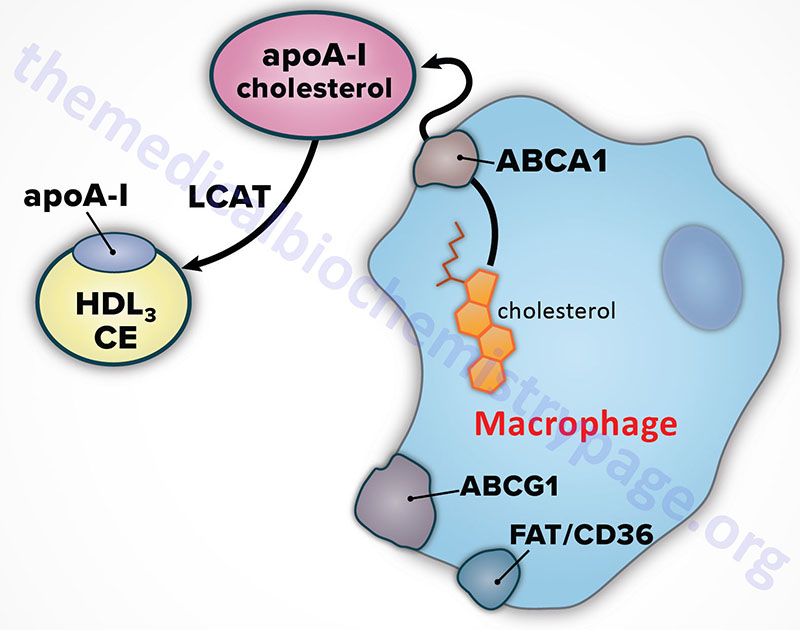Last Updated: October 29, 2022
Introduction to Tangier Disease
Tangier disease (TD) is an autosomal recessive disorder resulting from defects in the ATP-binding cassette (ABC) transporter family gene, ABCA1. The disease is so named because it was originally identified in two individuals living on Tangier Island, Virginia, USA.
Tangier disease is a very rare disease with only around 100 cases identified worldwide. Although a rare disease, the identification of the gene that is defective in the disease, and an analysis of the function of the encoded transporter protein, have provided insight into overall cellular cholesterol homeostasis.
Molecular Biology of Tangier Disease
The ABCA1 gene is found on chromosome 9q31.1 spanning 149 kbp and composed of 50 exons encoding a protein of 2,261 amino acids. At least 50 different mutations have been identified in the ABCA1 gene in Tangier disease patients. Mutations found in the ABCA1 gene in Tangier patients include missense and nonsense mutations, small intragenic deletions or insertions, and splice variants.
Expression of the ABCA1 gene is highest in placenta, liver, lung, and adrenal glands. The promoter region of the ABCA1 gene contains numerous binding sites for transcription factors involved in regulation of lipid metabolism. Indeed, numerous pathways of transcriptional regulation of ABCA1 have been identified including cAMP, nuclear receptors (such as LXR, RXR, and PPAR), hormones, and cytokines. The involvement of cytokines in the regulation of ABCA1 expression demonstrates the crosstalk between cellular cholesterol management and inflammatory responses. Pro-inflammatory cytokines such as tumor necrosis factor-α (TNF-α) and interleukin-1β (IL-1β) interfere with the transcriptional enhancement of ABCA1 exerted by LXRs.
The predominant site of ABCA1 protein localization is the plasma membrane. In non-hepatic tissue the role of ABCA1 is to promote the efflux of cholesterol, principally to the HDL class of lipoprotein particles, which in turn transport the cholesterol back to the liver. In the liver ABCA1 promotes the formation of pre-β HDL (a lipoprotein particle composed entirely of ApoA-I and phospholipids). This latter function of ABCA1 demonstrates its important role in hepatic production of HDL.
Clinical Features of Tangier Disease
The biochemical hallmarks of Tangier disease are a lack of circulating high density lipoprotein (HDL) and apoA-I. The clinical manifestations of Tangier disease are related to an accumulation of cholesteryl esters in reticuloendothelial tissues (e.g. tonsils, lymph nodes, spleen, thymus, and bone marrow). The first symptom seen in almost all Tangier disease patients is enlarged tonsils that appear yellow-orange in color. Additional typical clinical findings include splenomegaly, a variable incidence of cardiovascular disease, and peripheral neuropathy.
Treatment of Tangier Disease
Treatment of Tangier disease has proven to be an elusive problem. This is, in part, due to the variability of clinical manifestation from patient to patient as well as the low numbers of identified patients. Drugs used in the treatment of hypercholesterolemia, that have been shown to increase circulating levels of HDL, may prove useful in treating the cardiovascular problems associated with Tangier disease, but no solid evidence has yet been gathered. The two drugs that may exhibit efficacy in Tangier disease are the fibrates and nicotinic acid. For information on pharmacologic intervention in hypercholesterolemia visit the Cholesterol Metabolism page.

